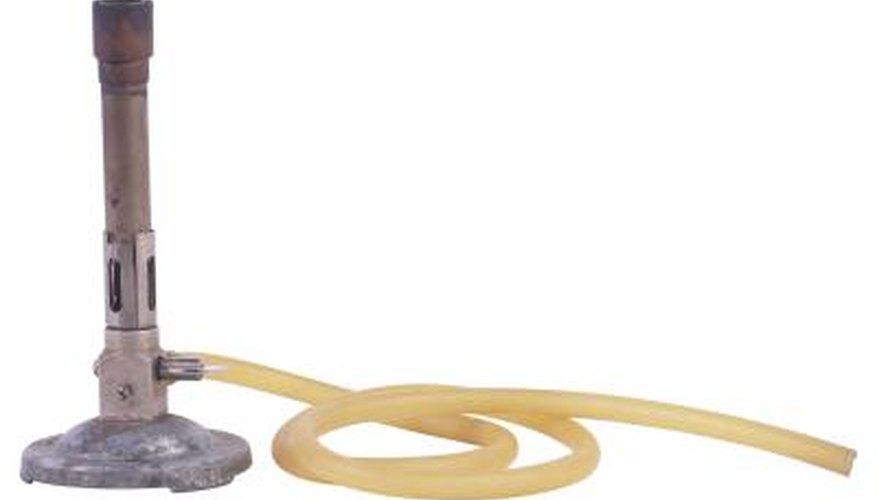The Bunsen burner, invented in 1855, is a mainstay in science labs. Bunsen burners operate as upright miniature torches that burn natural gas or propane to produce flames for heating solutions, drying solids or sterilising small instruments. Bunsen burners typically provide two adjustments for controlling the size and temperature of the flame: a fuel control valve and an air control valve. Depending on the type of fuel used and the fuel/air mixture, Bunsen burners can achieve temperatures in excess of 1500 degrees Celsius in the hottest part of their flames.
- The Bunsen burner, invented in 1855, is a mainstay in science labs.
- Bunsen burners typically provide two adjustments for controlling the size and temperature of the flame: a fuel control valve and an air control valve.
Read the documentation supplied with the Bunsen burner to verify that it is designed to burn the type of fuel you intend to use. Manufacturers produce Bunsen burners that burn methane, also known as natural gas, or propane. The burners for these fuels contain different sized tips and valves, and the fuels are not interchangeable.
Inspect the flexible, rubber gas supply hose for cracks or holes. If you find any cracks or holes, replace the hose. Do not attempt to use a damaged gas hose because it poses an explosion hazard.
Connect one end of the rubber gas supply hose rubber to the barbed fitting on the Bunsen burner, and connect the other end to the barbed fitting to the gas supply. The gas supply valves in science laboratories usually bear clear labels to indicate that they supply natural gas. If using a portable gas source, such as a propane tank, special adaptors might be necessary to allow for rubber hose connection. Always refer to the supplied with the burner for details on how to make connections to gas sources.
- Inspect the flexible, rubber gas supply hose for cracks or holes.
- If using a portable gas source, such as a propane tank, special adaptors might be necessary to allow for rubber hose connection.
Close the gas-supply valve on the bottom of the burner by rotating counter-clockwise until it stops. Close the air-supply valve by rotating the barrel of the burner clockwise until it stops. Next, open the gas valve about a half-turn clockwise.
- Close the gas-supply valve on the bottom of the burner by rotating counter-clockwise until it stops.
Turn the gas-supply valve to full open. Ball-type valves with a lever that rotates 180 degrees are open when the lever is parallel with the barbed fitting. They are closed when the lever is perpendicular to the gas line.
Put on safety glasses, then position a striker or an elongated grill lighter over the burner and light it.
Adjust the flame with the fuel valve and air valve. The fuel valve on the bottom controls the height of the flame, where clockwise rotation makes the flame bigger. The air valve at the bottom of the burner's barrel controls the temperature, where counterclockwise rotation makes the flame hotter and bluer. For most work, a burner should produce a flame about 2-3 inches high with a blue cone in the centre.
TIP
If the flame immediately goes out, then the burner is adding too much air to the fuel mixture. Turn off the gas and reduce the air intake by turning the barrel of the burner clockwise. Then turn the gas back on and light the burner.
WARNING
Always wear safety glasses when working with open flames. Never light a Bunsen burner within 10 feet of flammable or combustible materials.
